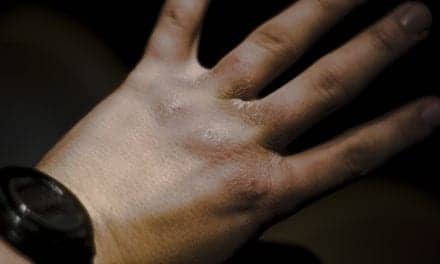6/23/06
According to the American Academy of Dermatology (AAD), the last place one might look for a melanoma is where a small percentage of them show up—under the nails or on the scalp, palms of the hands, and soles of the feet. Because they are not easily detected and symptoms can mimic other conditions, these skin cancers are very dangerous if left undetected.
Melanoma that manifests itself within the nail plate, known as subungal melanoma, accounts for a small fraction of all skin cancer cases–2% in Caucasians and 30% to 40% in people of color. These melanomas most commonly occur under the nail of the thumb or big toe, and they are often characterized by the appearance of a brown- or black-colored streak within the nail plate that is often mistaken for a bruise.
Melanoma that occurs on the scalp is also difficult to detect because it is easily hidden by hair. Because symptoms do not appear until the melanoma has progressed to an advanced stage, dermatologists recommend a self-exam using a blow dryer to part the hair away from the scalp and a mirror for hard-to-see areas. Symptoms of melanoma occurring on the scalp include a pigmented lesion that has recently appeared or changed, or a lesion that bleeds. To determine whether a mole is suspicious, it is helpful to keep these factors in mind:
• Asymmetry: One half of a mole is different from the other.
• Border irregularity: The edge, or border, of melanomas is usually ragged, notched, or blurred.
• Color: Benign moles can be any color, but an individual mole will be only one color. Melanoma often has a variety of colors within the same lesion.
• Diameter: Whereas melanomas are usually greater than 6 mm in diameter when diagnosed, they can be smaller. If a mole is different from others, or it changes, itches or bleeds, even if it is smaller than 6 mm, the patient should see a dermatologist.
Melanomas can also occur in other unusual areas, such as in the eyes or the mucosal tissue lining the nose, mouth, genitalia, anus, urinary tract, and esophagus.
“With these types of hidden melanomas, symptoms often include bleeding, pain or an unusual sensation without a known cause,” says Stephen P. Stone, MD, AAD president. “It’s extremely important to seek the proper medical attention for problems that arise in these areas to rule out melanoma or another serious medical condition.”
[www.aad.org, May 1, 2006]




